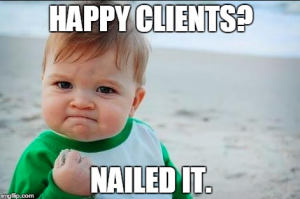Group Gordon’s Marykate Cary shares ways to set yourself up for success with any new client relationship.
The first few weeks of a new client engagement are critical for creating a productive partnership. Getting off on the right foot with a new client sets you up for communications success in the year ahead and for a long-term relationship.

The first order of business is to become an expert on everything about your client – their industry or issue areas, the make-up of their key audiences, and their business strategy and objectives. Ask your client to share materials that would provide helpful context and speak with staff members or stakeholders who can further inform your understanding of the business.
In addition to knowing your client inside and out, do your own in-depth outside research to identify peer organizations and competitors that can serve as comparison points, cautionary cases, or examples to emulate.
From there, media analysis into your client and its competitors’ past coverage can reveal areas of strength or deficiency, audiences that aren’t being reached through the media, and topics that are ripe for content or commentary. Often clients may not have a full understanding of their visibility or communications success. Some think they are reaching audiences they aren’t or don’t understand the value of trade media. Additionally, through past coverage research, you can learn what types of stories get coverage – and which don’t. This will prevent weeks of trying to drum up coverage for events or announcements that aren’t substantial for the industry or not of interest to media. Demonstrating your knowledge of your client’s media profile and the media landscape in your client’s industry will impress them, prove your value, and get you thinking proactively about opportunities.
The start of an engagement is also the perfect time to assess your existing media relationships. Ask yourself:
– Who would be interested in getting to know your client?
– Where do you need to build new media relationships?
– What trade outlets are most influential in your client’s field?
The start of an engagement is also the time to evaluate existing and potential communications challenges. Consider if there are public misconceptions about the client or inconsistencies in messaging across the organization. Addressing these issues at the outset will mean smoother sailing down the line.
Taking these steps in the first few weeks of a client engagement will not only help you better understand your client’s business and priorities but also help you set realistic goals and meaningful measures of success. By becoming an expert, identifying the clients’ unique challenges, and uncovering untapped opportunities, you will set a solid foundation for future success.